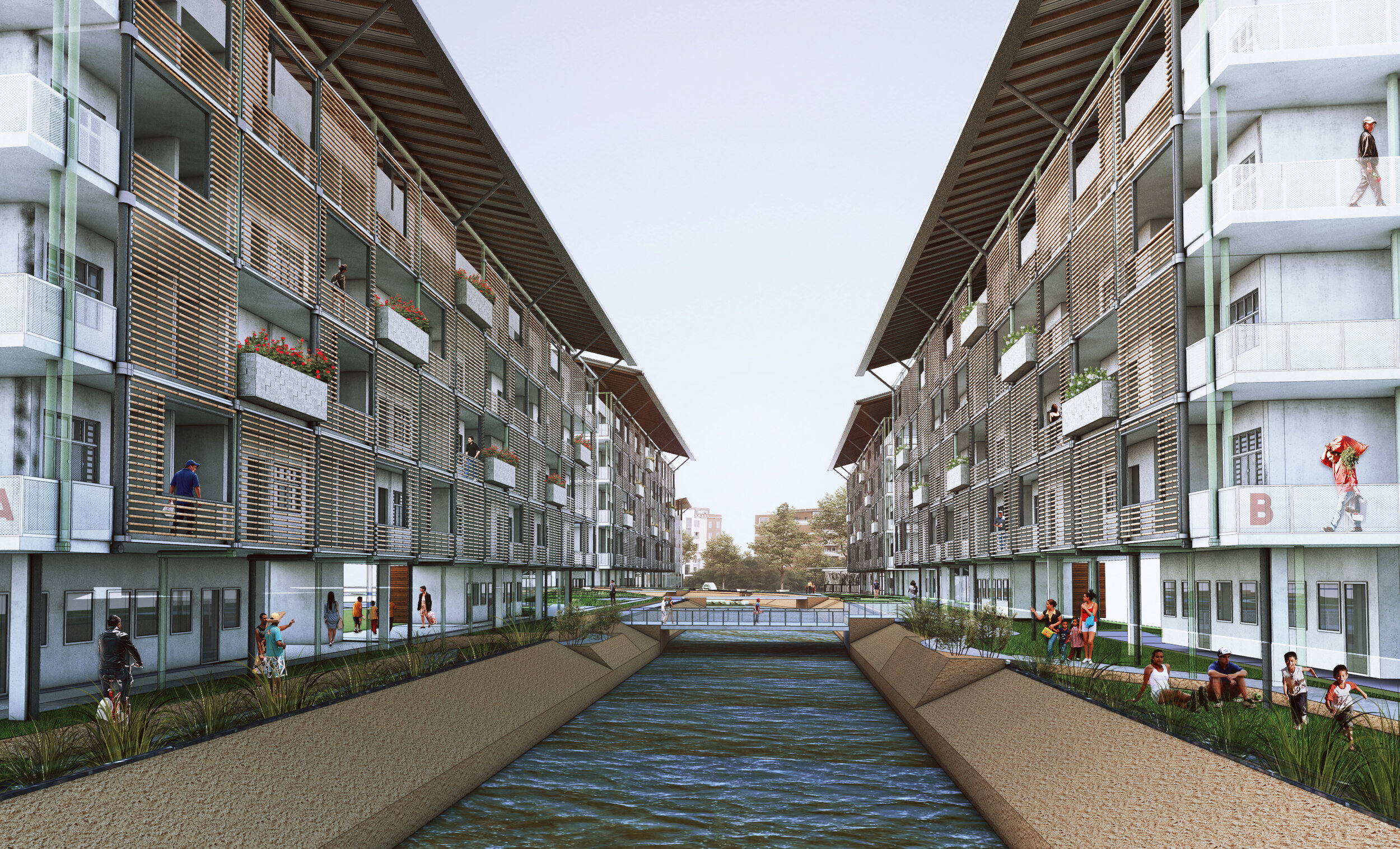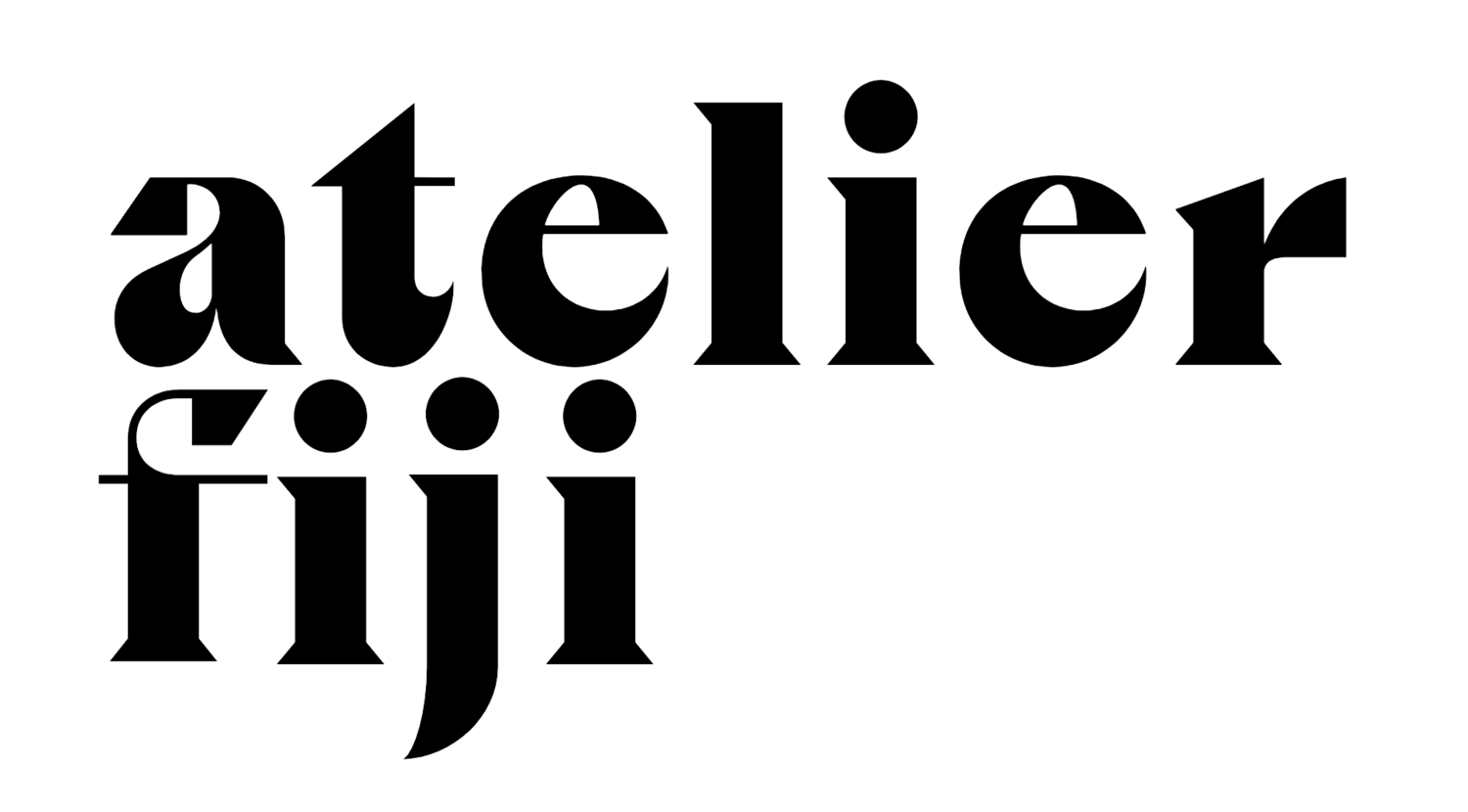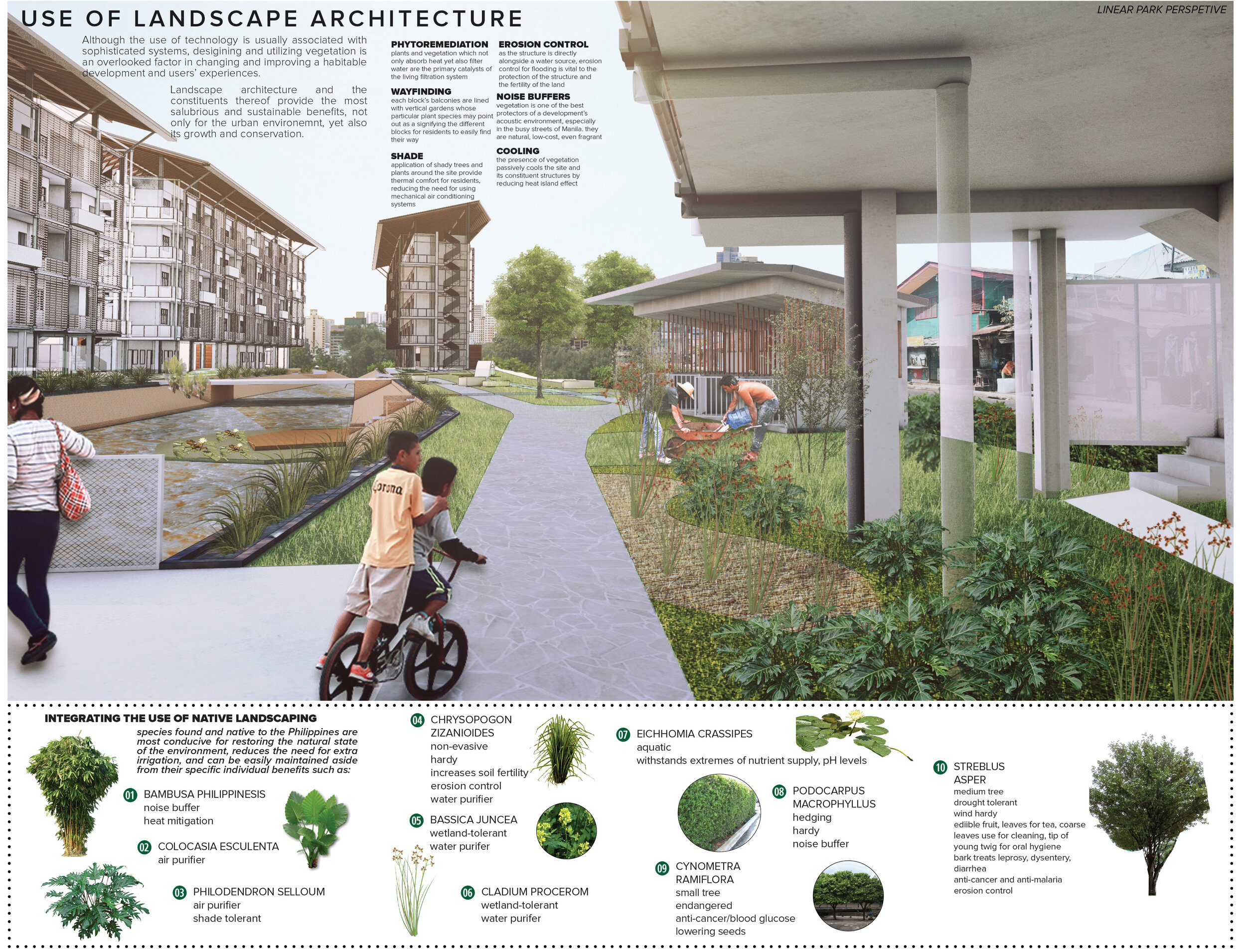
PHILTER HOUSING
The Urban Regeneration of Metro Manila by Filtering the Pasig River
MANILA’S BIGGEST URBAN CHALLENGES
Although Metro Manila has been hailed as one of Southeast Asia’s fastest growing cities, there remains the stigma of urban poverty which prevails at every corner of the city. The Philippines’ capital is the 11th most populous city in the world, and according to the Asian Development Bank 2010 report, 35% of which are comprised of informal settler households. As much as the government has attempted to relocate and provide them with social housing, the people return to their informal homes as the housing provided to them are mainly 1) far from their workplace — which is the main purpose of their arrival and stay in the city — and 2) the substandard quality of their new abodes (BP 220 itself needs updating).
Close to, or rather, at the heart of the informal settler issue also lies the Pasig River, the main waterline of Metro Manila that was once described as crystal clear is today biologically dead. It spans 27 km long with an average depth of 1.3 meters, bisecting 5 major cities (Taguig, Pasig, Makati, Mandaluyong, and Manila) of Metro Manila, and runs from Manila Bay to Laguna de Bay. Most of its pollution began in the 1930s as the industrial age reached the Philippines and has continued to be battered by administrative negligence and the citizens’ reckless ignorance, moreover degraded by the lack of proper solid waste management and sanitation infrastructure in areas surrounding it. Informal settlers who have chosen to live in Manila are located along the 43 minor tributaries / esteros (little estuaries that branch out from the main river line like canal streets). Just as the esteros became the slums’ home they too naturally became their main sewer and trash can, leading to and keeping the Pasig River in its vilest state.
Efforts by the Pasig River Rehabilitation Commission (PRRC), a Public-Private Partnership (PPP) entity established in 1999 that sought to clean the river and revive the city with it, to relocate these settlers and build linear parks now remain ineffective as the informal settlers lapse and return to their esteros. In the last 17 years of PRRC’s programs, only 9 of 43 esteros have been successfully rehabilitated to date of this project, thus the immediate need for a firmer and more sustainable solution, and this time possibly, through architecture.
LOCATION P. Casal Street, San Miguel, Manila PH
AREA 9,261 sqm
TYPE Housing
YEAR 2016
STATUS Completed - ITAD Competition 2016
TEAM FIJI and Kennedy Sy
CLIENT N/A
SOCIAL HOUSING AS THE FILTER FOR THE PASIG RIVER
STUDY AREA P. Casal Street, San Miguel, Manila where thousands of informal settler families reside
The current slum settlement is redeveloped as blocks that run along the esteros with allocated common recreational facilities, following the river easement guidelines. Each housing block is 5 stories with 11 units per floor (2nd-5th floor), the ground floor is reserved as areas for open space and small commercial activities, providing income and security. A living unit has a floor area of 24 sqm each programmed with 1 bedroom, 1 kitchen, 1 T&B, and an empty shell area (5 sqm) meant as a ‘space for growth’ with which homeowners can transform on their own as a way to develop a greater sense of ownership.
Essentially, the Philter Housing is made to be a living water filtration system for the estero itself. One block is calculated to filter 3000 liters every 4 days and will be equipped with a biogas production system alongside solar power harvesting to be self-sufficient. Open areas are meant to be wet gardens that are connected with the water filtration system. Landscaping of the promenade and open areas are integrated with these wet gardens and will make use of local vegetation to both enrich and protect the embankments.









